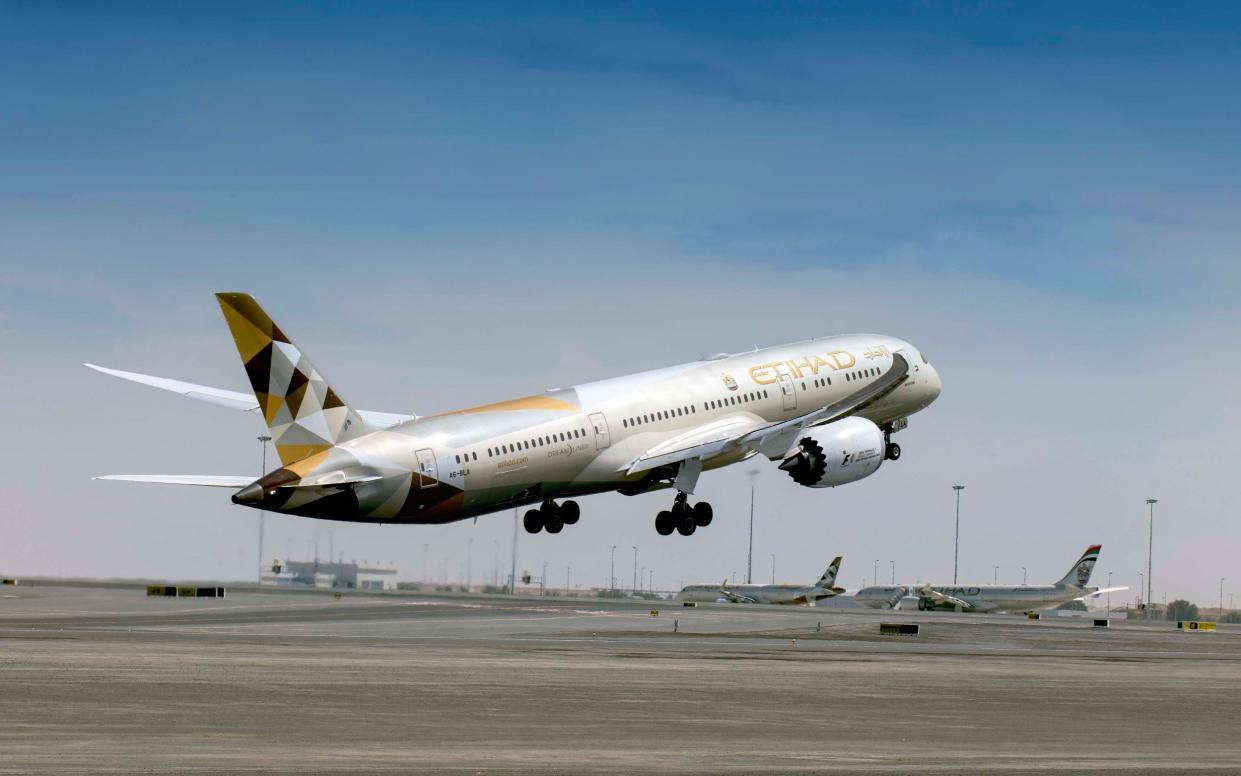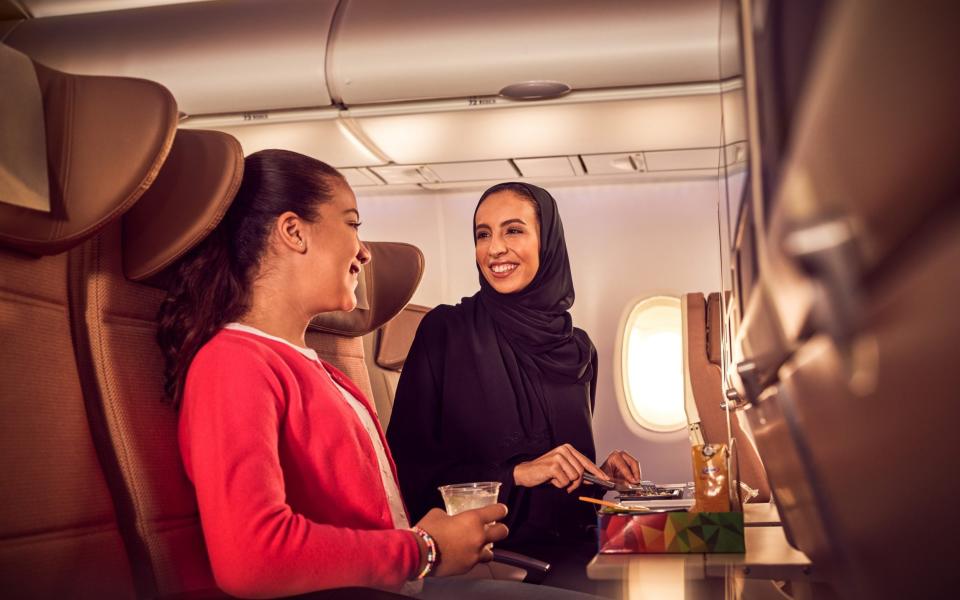British Airways has lost another battle in the war with its Middle Eastern rivals

There is an ABBA movement gathering momentum in southern Africa. Not the Swedish pop group, of course. These travelling malcontents are declaring they’ll fly on Anything But British Airways. It’s an old joke but one that’s doing the rounds again among folk who must flit between London and Johannesburg or Cape Town.
These frequent flyers complain that BA, which had for decades been their airline of choice, is using older planes on the South African routes, that the staff seem uninterested in their customers, and that BA is more expensive than its rivals. Instead, they’re going with the Gulf carriers – Etihad, Emirates and Qatar, via Abu Dhabi, Dubai and Doha, respectively.
It adds credence to a recent Which? survey in which 8,000 respondents put the three Gulf airlines on top and BA was voted 14th out of 15. Passengers declared that “BA is a thoroughly mediocre airline for both long-haul and short-haul”, awarding it two stars (out of five) for food and drink, for in-flight entertainment and for value-for-money. Etihad scored four stars in each of these categories.

Added to this, in a snap price check The Ultimate Travel Company, a major player in the luxury holiday market which ranks South Africa as its clients’ most popular destination, found that Etihad was cheaper than BA on the key London-Johannesburg route.
Prices vary from month to month, but the Gulf airline consistently came out on top. For example, for departures at the end of May, BA charges £770 for economy and £3,870 for business class while Etihad’s fares are £715 and £3,230. In June, BA is charging £10,580 for business class and Etihad £7,815.
So, having taken all this on board, and having been a loyal BA flier for decades, I decided to try out the competition. I flew to Johannesburg via Abu Dhabi with Etihad, the luxury airline bankrolled by sheikhs and boasting the youngest fleet of aircraft in the world. And for good measure I also did what my friends in southern Africa are doing, and broke up the journey with a couple of nights at one of the Emirate’s opulent resorts.

Emirates flight EY26 departs Heathrow at 2pm and gets into Abu Dhabi at 6pm local time. My seven-hour flight on a 787 Dreamliner, to my mind the most passenger-friendly aircraft of the time, was comfortable and entertaining (with a better selection of films than most of the legacy carriers). The crew were impeccably polite. The food and drink were top class. Basically, it confirmed all the views expressed in the Which? poll.
The 6pm arrival meant I had checked in at the Saadiyat Rotana Resort and Villas by 8pm (it’s a 20-minute cab ride from the airport), in time for a light meal and a wander around the sprawling 327-room Saadiyat Island resort. Coming out of a European winter, this was my first encounter with warmth, sunlight and clear summer nights. As I discovered the following morning, it is set on a five-mile stretch of pristine white beach, and an early-morning swim in the sea reset my chakras significantly.
The day ahead would take in a morning visit to the nearby Louvre Abu Dhabi, the first stage in the rulers’ mission to establish Saadiyat Island (literally Island of Happiness) as the cultural centre of the Gulf, and then an afternoon trip across to neighbouring Yas Island for a wild spin around Ferrari World, the high-octane theme park that features some of the most hair-raising rides in the world.

The Louvre, which opened in 2017, is soon to be joined by the Frank Gehry-designed Guggenheim Abu Dhabi and the Zayed National Museum, together providing cultural centrifuge that the rulers claim will broaden the minds of generations to come, and hopefully lure foreign tourists. Although not universally acclaimed by international art critics, and recently cited in court over the trafficking of illicit Egyptian artefacts, this Louvre presents itself as a travel through time, through civilizations, through cultures.
Thus, I strolled from a Jordanian sculpture of a two-headed human from 6500 BC, through to Princess Henuttawy’s Egyptian sarcophagus from 950 BC, and then on to the Dutch tapestry of Daniel and Nebuchadnezzar from 1520, all in the space of a few hundred metres. This was my third visit to the museum, and, for all the brickbats, it remains a favourite.
After a couple hours of contemplative wanderings through the calm pools of light and shade in the presence of great art, it was on to the blood-and-thunder of Ferrari World on neighbouring Yas Island. As Saadiyat is the island of culture, so Yas is the island of theme parks, principally Ferrari World, Yas Waterworld, Warner Brothers World and the soon-to-be-opened Sea World. The lure here is the fastest roller coaster in the world – the Formula Rossa goes from 0 to 240kph in just under five seconds – a thrill that in its own right made the Abu Dhabi excursion worthwhile.

Finally, dinner at the Rotana’s excellent Italian restaurant and then a late-night drive to the airport to catch EY 602 to Johannesburg, which leaves at 1.45am, but after an eight-hour flight delivers you to Johannesburg at dawn (8am). Compared to BA’s direct, 11-hour flight this is a somewhat circuitous, time-consuming route but it certainly made for a pleasant diversion.
The return leg was more time efficient with no break between flights. EY 601 left Johannesburg at 10.15am and arrived in Abu Dhabi at 8.00pm, which meant a six-hour layover before EY 11 took off for London. It arrived at Heathrow at 06.45 the following morning.
So, what, you may ask, is the point of adding so many extra hours to flying time? Well, the luxury of flying Etihad and the languid break on the out leg apart, there is the price advantage. For the rest you’ll have to ask southern Africans. They’re certainly doing it.

